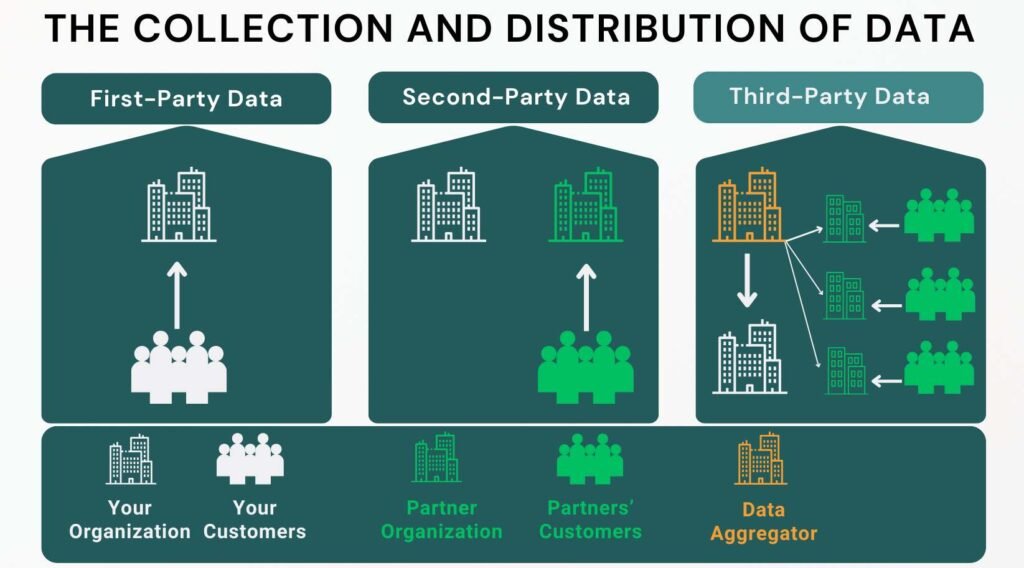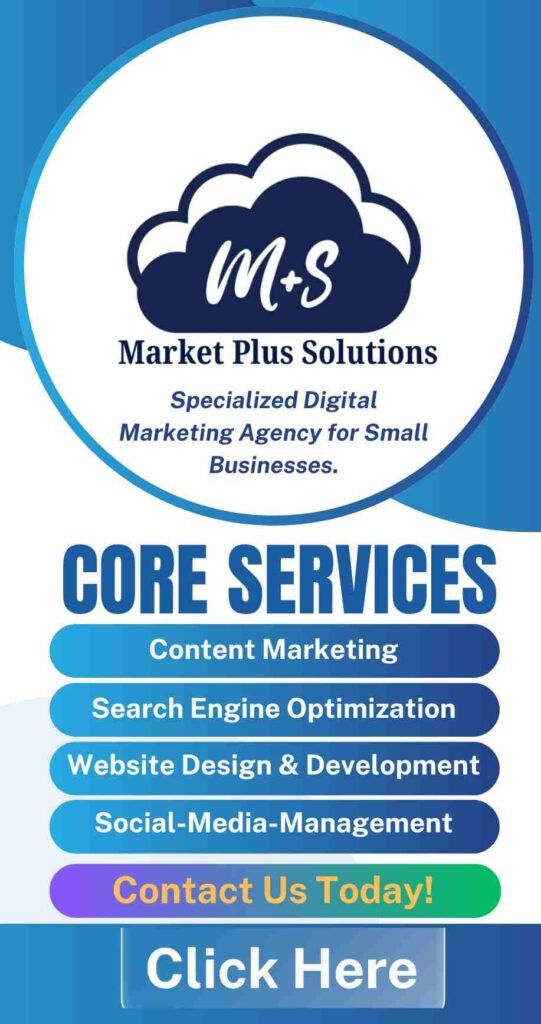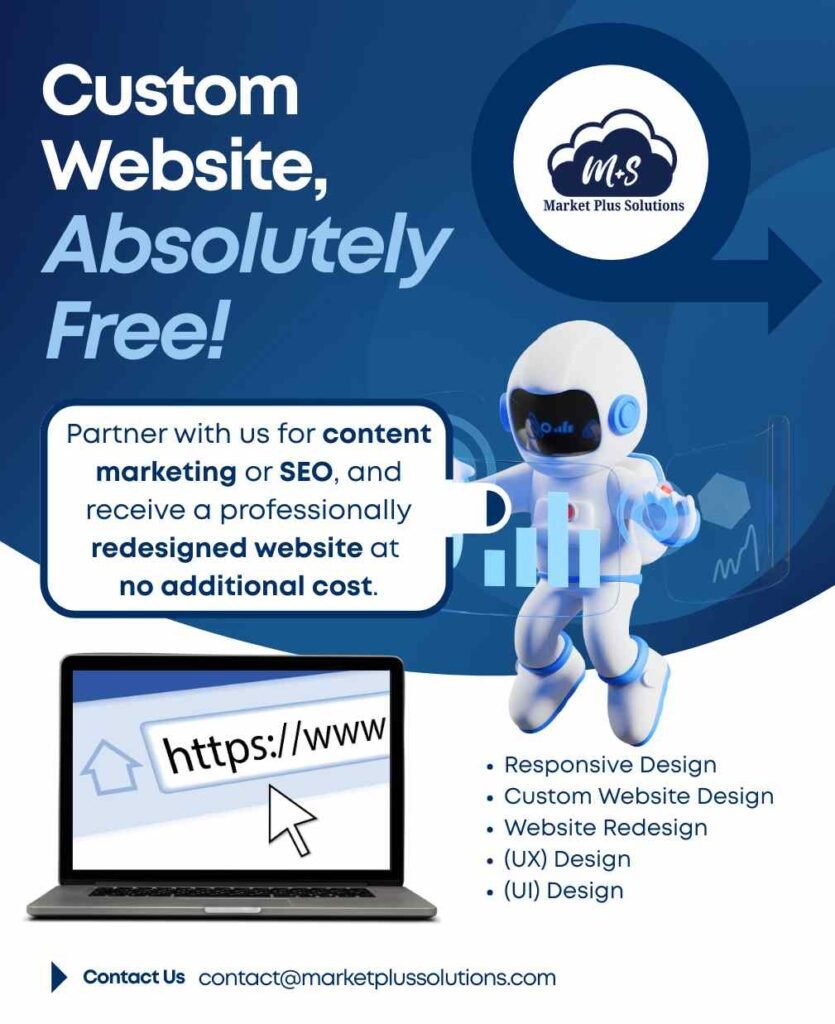Maximizing ROI with First-Party Data
Why is ROI critical in the era of data-driven marketing?
We’re in an era where marketing budgets face constant scrutiny. Every dollar spent needs to deliver measurable returns—no exceptions. That’s why Maximizing ROI with First-Party Data is no longer optional; it’s essential.
We’ve seen firsthand how it transforms raw customer data into actionable insights that drive real growth.
So, how does first-party data actually help in maximizing ROI?
First-party data—collected directly from your customers and prospects—has become the single most reliable source of truth in marketing.
(We have written a detailed article on First-Party Data marketing, Click Here to explore)
Unlike third-party data, which is often incomplete or outdated, first-party data gives you a real-time, accurate view of your audience. That’s how we’ve been able to build personalized, relevant experiences that generate not just clicks, but real revenue.
What can you expect to learn from this guide?
We’ll walk you through best practices, and real-world examples of Maximizing ROI with First-Party Data. We’ll share the optimization techniques that have helped us—and our clients—enhance marketing ROI. We’ll outline the best ways to leverage first-party data for personalization, and we’ll share case studies that prove it works.
Ready to dive in?
Let’s get into the details of how to maximize ROI with first-party data—and finally leave guesswork and third-party cookies behind. (Explore Our SEO Page Here)
What is First-Party Data and Why It Matters?
What exactly is first-party data—and why does it matter so much when it comes to Maximizing ROI with First-Party Data? Let’s unpack.
First-party data is the information you collect directly from your own customers. It comes from real interactions—website visits, purchase histories, email engagements, and even in-store visits. We’ve worked with countless clients who rely on first-party data as the backbone of their marketing strategies, because it’s accurate, relevant, and fully owned by the business itself.
Why does that matter for Maximizing ROI with First-Party Data?
Unlike second-party or third-party data—which often comes with missing details or questionable accuracy—first-party data gives you a real-time, crystal-clear view of how your customers actually engage with your brand. That means no guesswork, no outdated information
What is third-party data? Third-party data is information collected by outside organizations from various websites, apps, and platforms. It’s then sold or shared with other businesses that use it for advertising or targeting, even though it’s not collected directly from their own customers. Often used for cold emails and calls, third-party data is typically less accurate and reliable because it’s based on external sources rather than direct relationships with customers.
—just actionable insights that put you in the driver’s seat.
What does that mean in practice?
It means you can personalize every campaign based on what your customers actually want and need. Maximizing ROI with First-Party Data starts here: tailoring every message, every offer, every experience to align with real customer behavior. That’s how we’ve helped clients drive conversions, boost engagement, and build lasting relationships.
When we compare first-party data to second- and third-party data, the differences are obvious.
- Second-party data? That’s someone else’s first-party data—shared through partnerships and often limited.
- Third-party data? Aggregated from multiple sources, and usually incomplete or out-of-date.
(We have shared a complete article on First-Party Data Strategy, Click Here to Explore)
Maximizing ROI with First-Party Data means putting your trust in the most reliable, cost-effective, and future-proof resource you can control—and that’s your own data.

The Link Between First-Party Data and ROI
How does Maximizing ROI with First-Party Data actually impact your marketing efforts?
Leveraging first-party data for marketing isn’t just another tactic—it’s a proven strategy that helps you reduce costs and drive better outcomes (ThinkWithGoogle). When you base your marketing strategies on the data you collect directly from your audience, you eliminate the need for expensive intermediaries and guesswork. Every dollar you spend is guided by Maximizing ROI with First-Party Data, giving you the insights you need to reach the right customers, with the right message, at the right time. (We have shared a very detailed article on how to collect First-Party Data. Click here to explore)
Why is this so effective?
With first-party data, you get a clear, real-time view of your customers’ behavior, preferences, and purchase journeys. That means you’re no longer casting a wide net and hoping for conversions. Instead, you’re investing in Maximizing ROI with First-Party Data by creating targeted, personalized campaigns that align perfectly with your customers’ actual needs and interests.
We’ve seen firsthand how Maximizing ROI with First-Party Data drives real results. According to industry studies, marketers who prioritize data-driven marketing ROI achieve up to 20% higher efficiency in their campaigns and see conversion rates improve by as much as 30% (BullDogDigitalMedia). That’s not just theory—it’s what happens when you put first-party data optimization at the center of your marketing strategy.
What’s more, focusing on Maximizing ROI with First-Party Data builds a sustainable, reliable marketing engine—one that’s less reliant on third-party cookies and more focused on driving ROI through data analytics you actually own and control.
If you’re serious about creating campaigns that drive measurable results, Maximizing ROI with First-Party Data isn’t optional—it’s essential. (Explore SaaS SEO Service Here)
Case Studies: First-Party Data in Action
We all know theory is great—but nothing beats seeing Maximizing ROI with First-Party Data in action. That’s why we’re sharing a few real-world examples from companies we’ve worked with, showing exactly how Maximizing ROI with First-Party Data drives results across different industries.
Why do these case studies matter? Because they prove that Maximizing ROI with First-Party Data isn’t just a concept; it’s a proven strategy we’ve implemented ourselves. (Explore our Content Marketing Page Here)
Here’s how some of our clients have turned first-party data optimization into measurable growth:
Agroforestry: A German Company
This agroforestry business was brand new—barely six months since its launch—yet they managed to secure orders for all their produce through 2027. How did they do it? Maximizing ROI with First-Party Data was at the heart of their success.
It all started at three industry exhibitions where they collected business cards and had real conversations. That simple exchange gave them a powerful advantage: the right to reach out to interested contacts directly, enabling Maximizing ROI with First-Party Data from the very beginning.
They didn’t waste any time. They followed up with samples, detailed charts, and articles explaining the benefits, revenue opportunities, and use cases of their plants. One by one, clients got on board. Every follow-up was guided by insights from their own first-party data—no guesswork, no third-party lists.
The result? Every bit of their produce is booked until 2027—and given the positive response, that’s likely to extend even further. And this isn’t some overnight phenomenon: it’s a direct result of Maximizing ROI with First-Party Data from day one. (Explore Best SaaS Content Marketing Agency Here)
This company’s first-ever customer came directly from a conversation at an exhibition. From there, every lead, every sample, and every order flowed from that first-party data they collected themselves. This is what Maximizing ROI with First-Party Data looks like when it’s done right: 100% ROI from data they owned and controlled.
And the strategy didn’t stop there. We’ve supported them in attending seminars and lectures across Germany—sometimes even giving the lectures themselves—where they continue to gather leads and expand their reach. Every time they engage with prospects, they’re building their own first-party data assets that keep driving their marketing engine forward.
This is proof that Maximizing ROI with First-Party Data isn’t just a theory—it’s a real-world strategy that delivers results, even for new companies.
VIP Service Company
This client had been in business for seven years, but by early 2024, they were struggling to stay profitable. That’s when the owner reached out to us for help. We’ve worked with plenty of businesses in similar situations, and we know firsthand that Maximizing ROI with First-Party Data often holds the key to unlocking growth.
The first thing we did? We reviewed their website, and it was clear it wasn’t doing them any favors. It lacked structure, user engagement, and strong calls to action. We stepped in with a complete strategy. We believed in our approach, and they believed in us. To build trust, we started with a minimal fee—on the agreement that our compensation would increase as they started to get results.
We revamped their entire website, focusing on design, copy, and SEO, and made sure it was fully GDPR-compliant. Every CTA was placed with intention—each one designed to capture interest and collect first-party data from real prospects. That’s how we began Maximizing ROI with First-Party Data from the ground up.
But here’s where it got interesting: instead of getting a flood of individual inquiries, we started receiving queries from agencies that provide VIP services to high-net-worth clients. We recognized the opportunity immediately. Instead of ignoring these leads, we reached out to those agencies directly—and even tailored some services to match their unique needs. (Explore our latest article on SaaS SEO Service)
Within four months, the company started doubling its revenue. And the secret? Maximizing ROI with First-Party Data at every touchpoint. By understanding exactly where their leads were coming from—and focusing on nurturing those relationships—we helped them turn first-party data into long-term growth.
Since then, they’ve continued to expand. They now use every client interaction—whether it’s through the website, email, or direct outreach—to build a deeper, richer first-party data pool that fuels even better results.
This case shows that Maximizing ROI with First-Party Data isn’t just for tech companies or e-commerce giants. It’s for any business that wants to turn real customer data into real revenue—no matter the industry.
We know that theory is important, but seeing Maximizing ROI with First-Party Data in action is what truly drives the point home. Let’s look at how one of our clients—an IT company—transformed its business using the right data and strategy.
IT Company (Security)
This client was an IT company with just 10 employees. When they approached us, they were struggling with lead generation. Their business had two main sides: selling security hardware and offering installation and maintenance services.
But what went wrong? Despite offering both products and services, customers were only buying one piece of the puzzle. Some would buy the hardware from them but hire someone else for installation and maintenance. Others would use their installation services but buy hardware elsewhere. This fragmented approach was capping their growth—and leaving a lot of revenue on the table.
We saw the opportunity immediately. First, we completely revamped their website and content to make it crystal clear that they were a one-stop solution for hardware and services.
We used every touchpoint—landing pages, service descriptions, and CTAs—to emphasize that this company could handle everything in one seamless package.
But we didn’t stop there. We leveraged Maximizing ROI with First-Party Data to reach existing and potential customers with personalized campaigns. By analyzing their first-party data—past purchases, inquiries, and service records—we created targeted outreach that highlighted the benefits of buying both hardware and services from a single provider. (What should you look for in the Best SaaS SEO Agencies – Click Here)
The results? Within six months, they doubled their revenue. Customers finally understood the value of buying hardware and services as a complete package—no more splitting orders between different providers. That’s what happens when you apply Maximizing ROI with First-Party Data: you align your strategy with real customer needs and remove every barrier to conversion.
This is a prime example of how Maximizing ROI with First-Party Data transforms even a small IT business. By understanding their own data and using it to guide every marketing move, this company didn’t just grow—they built a sustainable engine for ongoing success.
Measuring ROI: KPIs and Analytics
Collecting and activating first-party data is only half the equation.
So, how do you make sure all that information actually pays off? (How to maximize Digital Marketing ROI? Click Here to explore)
Maximizing ROI with First-Party Data comes down to measuring what matters most—and turning insights into actions. Let’s unpack how to track, analyze, and optimize your marketing efforts with the right metrics and analytics.
What ROI metrics are essential for first-party data?
Start with metrics that directly connect your first-party data to real business outcomes. Customer Lifetime Value (CLV) is a key indicator that shows how much each customer is worth over their entire journey (Qualtrics). Conversion rates, churn rates, and Average Order Value (AOV) (OnRampFunds) are also critical for Maximizing ROI with First-Party Data, especially when personalizing campaigns and fine-tuning your segmentation strategies.
What about engagement? Don’t overlook email open rates, click-throughs, and in-app interactions. These metrics help you understand the impact of customer insights and data-driven decisions, showing you what’s working—and what’s not—across your entire marketing funnel. (Explore our SaaS Content Marketing Page Here)
How do you drive ROI through data analytics?
If you’re serious about Maximizing ROI with First-Party Data, you can’t skip analytics. Use platforms like Google Analytics, CRM dashboards, or dedicated marketing analytics tools to unify all your first-party data from different touchpoints. Visualize the complete customer journey—from first interaction to conversion to repeat purchase. This holistic view gives you the power to identify bottlenecks, refine campaigns, and consistently achieve data-driven marketing ROI.
According to a study by Boston Consulting Group (BCG), companies that effectively utilize first-party data for personalization can achieve up to a 2.9x revenue uplift and a 1.5x increase in cost savings compared to those relying on third-party data (Zuora)
What’s the best way to set up dashboards and measure success?
Here’s a step-by-step approach we use—and recommend—to keep everything on track:
1. Centralize Your First-Party Data: Integrate data sources like website, CRM, and email platforms into one analytics hub.
2. Define Your KPIs: Prioritize metrics like CLV, conversion rates, churn rates, and AOV that directly tie back to Maximizing ROI with First-Party Data.
3. Segment Your Audience: Use first-party data optimization techniques to build detailed audience segments that reflect actual customer behaviors.
4. Set Up Dashboards: Create custom dashboards to monitor KPIs at a glance, using tools like Looker, Tableau, or Google Data Studio.
5. Analyze and Act: Identify high-ROI segments, flag underperforming campaigns, and refine your strategies accordingly.
6. Test and Iterate: Rely on A/B testing and multivariate testing to continuously refine campaigns and keep Maximizing ROI with First-Party Data at the heart of every decision.
When you measure success with the right KPIs and analytics, you turn first-party data from a static resource into a powerful growth engine. Maximizing ROI with First-Party Data isn’t just possible—it’s the cornerstone of sustainable, profitable marketing. (Niche SEO can change your Small SaaS Business within three months. Click Here to Explore More)
Conclusion
Maximizing ROI with First-Party Data isn’t just a marketing trend.
It’s a strategic powerhouse that transforms your entire approach to marketing. From customer data ROI to data-driven marketing ROI, the value of collecting and using data directly from your audience cannot be overstated. (Explore Market Plus Solution Home Page Here)
So, what have we covered?
Throughout this guide, we’ve shown how Maximizing ROI with First-Party Data turns generic campaigns into tailored experiences that drive real conversions. We’ve highlighted the best practices—segmentation, integration, continuous data quality management, and A/B testing—that have helped us and our clients turn insights into measurable results.
And the case studies prove it’s not just theory: companies in agroforestry, VIP services, and IT security are already Maximizing ROI with First-Party Data and achieving sustainable growth.
Now it’s your turn. Ask yourself:
1. Are you collecting and integrating the right first-party data to power Maximizing ROI with First-Party Data?
2. Are you optimizing it for the accurate, actionable insights that drive results?
3. Are you using that data to make customer insights and data-driven decisions that actually move the needle?
It’s time to embrace these strategies and watch your marketing transform into a true ROI engine—one that’s fueled by first-party data optimization and built to last.




